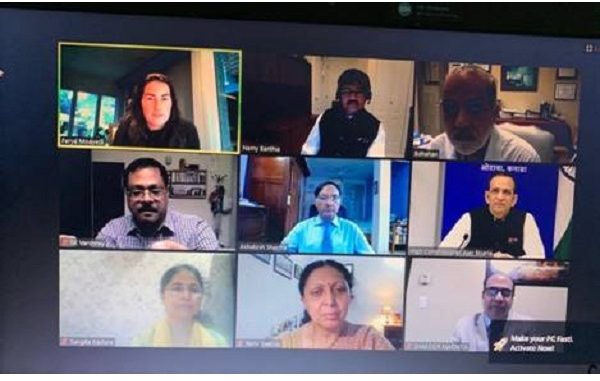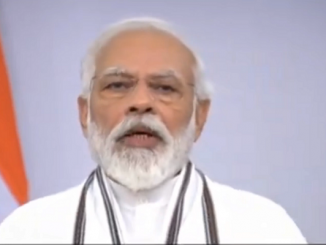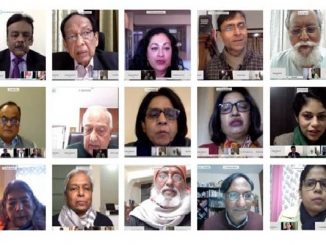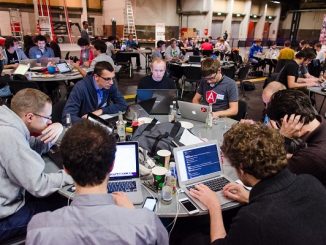
Aug 10: India-Canada IC-IMPACTS Annual Research Conference discussed ways of taking the cooperation between the countries to the next level by strengthening existing international connections, sharing best practices in multiple areas, and initiating new collaborations in government and institutions.
Highlighting the importance of Indo-Canadian S&T cooperation Secretary, Department of Science and Technology (DST) Prof. Ashutosh Sharma said, “Methods should be explored to take the cooperation between the two countries to a different level. Best practices in the areas of women in science, technology deployment, diversity in science, and STEM at schools could be shared between them, besides exploring new research in Artificial Intelligence, Quantum Sciences, and Electric Mobility”.
He also apprised the conference on the new STI policy of India and highlighted the role of the international connects as one of the significant stakeholders. He welcomed the Canadian views and inputs on strengthening such connects.
The Conference was organised virtually by the India-Canada Centre for Innovative Multidisciplinary Partnership to Accelerate Community Transformation and Sustainability (IC-IMPACTS) on 6 August 2020.
Prof. Nemy Banthia, Scientific Director and CEO, IC-IMPACTS informed that IC-IMPACT has resulted in 1,129 publications, 63 bilateral research projects, 24 technology deployments, 352 partnerships, and 29 patents and technology disclosures. He also pointed out that approximately 200 highly qualified Indian students and a large number of Canadian students, most of whom are masters, Ph.D., and post-doctoral fellows were trained under the IC-IMPACT. Projects implemented under this partnership have directly resulted in 7 start-ups and the creation of many jobs for our young graduates.
Secretary Department of Biotechnology (DBT), Dr. Renu Swarup emphasised on the need to initiate new collaborations and networking with the Canadian government and institutions. Prof. Alejandro Adem President, Natural Sciences and Engineering Research Council of Canada, also showed his enthusiasm for joint collaboration in applications ranging from quantum science, artificial intelligence to health sciences.
In the Round Table following the inauguration, detailed presentations were made on joint activities being pursued bilaterally under the DST-DBT-IC-IMPACTS programme. Dr. SK Varshney, Adviser & Head, International Cooperation DST, highlighted about joint research in emerging sciences, where there was a potential for translation of research into marketable applications of social relevance. Specific themes on joint collaboration could be mutually agreed. Indian programs on Gender equality in Science, Entrepreneurship in Science were also mentioned in which collaboration could be developed.
Mr. Barj Dhahan, Board Chair, IC-IMPACTS, Mr. Ajay Bisaria, High Commissioner of India to Canada, Prof. Ashutosh Sharma, Secretary, DST, Dr. Renu Swarup, Secretary, Department of Biotechnology, Prof. Santa Ono, President, University of British Columbia, Prof. Nemy Banthia, Scientific Director and CEO, IC-IMPACTS and Prof. Alejandro Adem, President, Natural Sciences and Engineering Research Council of Canada participated in the inaugural session of the conference virtually. Approximately 200 Indian and Canadian participants were present in the conference.
DST has been working with IC-IMPACTS for research partnerships since 2013. This partnership is aimed towards working hand-in-hand with communities in the two countries to develop community-based solutions for the most urgent needs.
The major focus areas of research cooperation under the IC-IMPACT are green buildings and smart cities; occupants survivability in buildings during fires; integrated water management & safe and sustainable infrastructure; and health problems arising from water-borne and infectious diseases.
Disclaimer: We donot claim that the images used as part of the news published are always owned by us. From time to time, we use images sourced as part of news or any related images or representations. Kindly take a look at our image usage policy on how we select the image that are used as part of the news.


